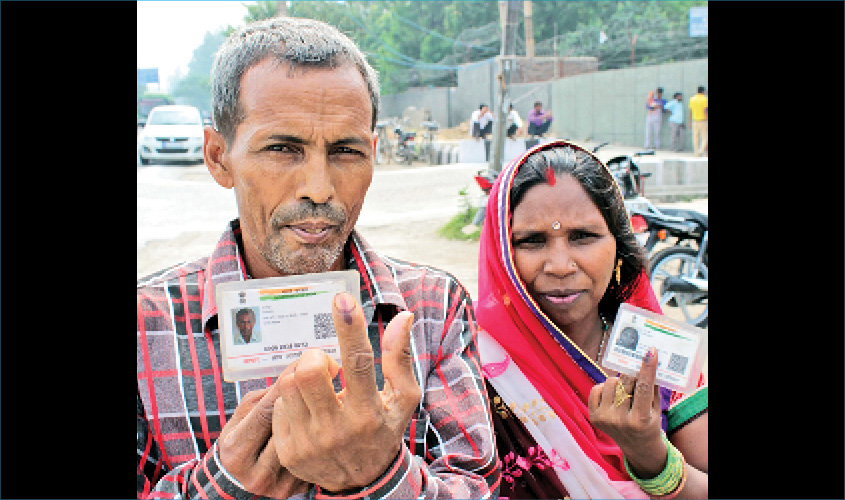Can a non unique ID that doesn’t certify anything, or does not know how it was created, that was never audited and never identifies, deliver benefits and subsidies without exclusion, leakages, and tragedy?
AUTHENTICATION IS NOT IDENTIFICATION
Identification requires that the transacting parties are responsible to establish each other’s identity. This reduces risk of fraud and, in the event of misidentification, places legal liability with the party that failed in its responsibility to identify the other. It’s unlikely that you will deposit money with someone who visits your home and claims to be your banker. It’s unlikely that your banker will allow anyone to withdraw money from your account without identifying them.
In authentication anyone with the key to open the lock can undertake transactions. If the individual visiting your house asks you to enter an OTP received on your phone to complete a transaction initiated by her, no identification ever took place but the transaction was authenticated by the OTP. If it turns out the person was an imposter, your bank has no legal liability. Similarly, if your banker allowed anyone in possession of your phone or biometric to authenticate with the OTP or biometric, no identification happened. Again, no one has legal liability.
Authentication is merely like opening the lock if you have the correct key. It does not imply who you are, your rights or your authorisation to transact anything behind the lock you opened with the key. Identification, on the other hand, requires the transacting party to establish your identity and right and face legal consequences for failure to identify you correctly.
If the authentication is done by an ecosystem of third parties that have nothing to do with your transactions, the relationship of the transacting parties is colonised, corrupted and destroyed as responsibility for the transaction rests with no one any longer.
Delivery of subsidies and benefits requires identification of the beneficiaries. The UIDAI does not identify anyone. The Aadhaar cannot identify anyone. In fact the Aadhaar (Targeted delivery of Benefits and Subsidies) Act doesn’t even define identification.
AADHAAR IS NOT UNIQUE
In order to prevent leakage of benefits and subsidies to ghost beneficiaries, the list of beneficiaries has to ensure there are no ghosts or duplicates. The UIDAI has been making the claim of Aadhaar being a unique ID. However, when asked, in an RTI query, to indicate the number of unique names and biometrics in its database, the UIDAI has no information. Furthermore, the UIDAI also indicates that they cannot retrieve a unique record using biometrics.
The UIDAI also has no idea about the documents of proof of identity or address used to issue the Aadhaar number. It is unable to say how many of these documents were used multiple times to issue an Aadhaar number.
This not only means that the Aadhaar database does not have unique records
In order to ensure that the demographic or biometric information associated with the Aadhaar and used for authentication is genuine, it needs to be certified by the issuer. When asked which officers are assigned the role to certify the demographic and biometric information associated with the Aadhar number, the UIDAI replied that no such role exists with the UIDAI.
The UIDAI further indicated that the database has never been verified or audited. It is evident that there is no basis to claim that the use of Aadhaar numbers is able to target subsidies and benefits to unique individuals and eliminate leakages to duplicates or ghosts.
TARGETED DELIVERY
How many unique households are targeted by the government for subsidy and benefits? The UIDAI cannot tell how many unique addresses exist in its database. It cannot tell the multiple person households, by counting the number of non-unique addresses in its database, exist either.
The mobile authentication for delivery of targeted benefits and subsidies as well as the protection and updation of data associated with the Aadhaar number assumes that each person with an Aadhaar number has an email and mobile number. The UIDAI has never tested out this design assumption by simply querying its database for the number of unique email IDs or mobile numbers in its database. Equally, it has no clue about the number of shared mobile numbers or email IDs.
Any delivery of benefits and subsidies requiring mobile authentication or email and mobile alerts cannot reach out to those who are not in possession of a unique mobile or email. Clearly, JAM numbers—Jandhan, Aadhaar and mobile numbers—to undertake Direct Benefit Transfers through Aadhaar payment systems cannot guarantee money transfers to real, unique beneficiaries like the RBI’s NEFT could.
Identification cannot be replaced with authentication in the delivery of subsidies. A database that is not unique, has not been certified, verified or audited, has no traceable basis, and which is run by private players in the ecosystem of Aadhaar, cannot be replaced by government databases and machinery mandated under various laws to target and deliver benefits and subsidies.
Furthermore, the UIDAI, that takes no responsibility for the use or users of Aadhaar, cannot replace the individual departments and ministries that have to deliver the benefits and services. The UIDAI has no skin-in-the-game to guarantee that no one will be excluded, no one’s dignity, justice, liberty or equality would be destroyed to claim benefits. Private parties who run the Aadhaar ecosystem cannot be allowed to be sovereign to deliver benefits and subsidies to unknown, uncertified, unverified and unaudited beneficiaries if Aadhaar were to be used under Section 7 of the Aadhaar Act. It is evident that there is no basis for the claim that the Aadhaar is required for the targeted delivery of benefits and subsidies.
Dr Anupam Saraph is an expert in governance of complex systems and advises governments and businesses across the world. He can be reached @anupamsaraph.

